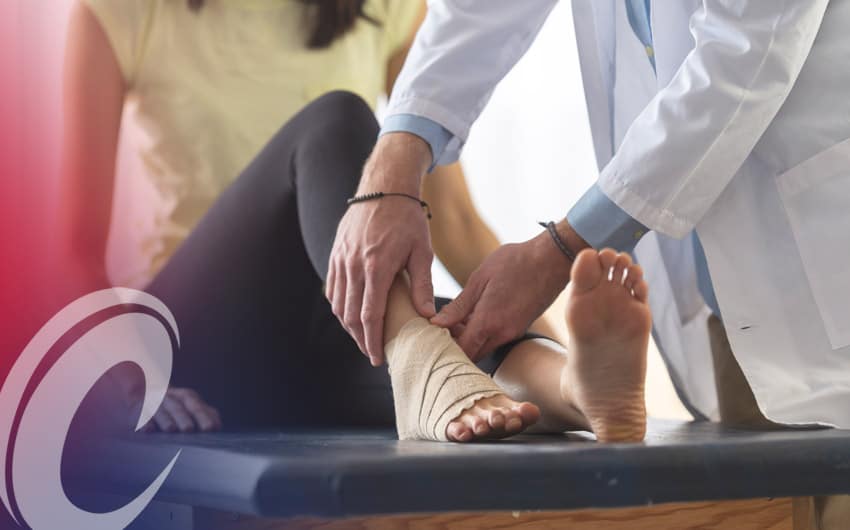Injuries unfortunately are a part of sports. How an athlete recovers and returns from the injury depends on each athlete and each injury. There are different severities of injury and different demands on the injured area depending on the sport being played and how each individual responds to injury and pain. In other words, an ankle sprain is not just an ankle sprain to be treated exactly the same way with every athlete. There will be similarities, but not every injury should be treated alike. Through social media, we may see professional athletes using anti-gravity treadmills, pool therapy, blood flow restriction therapy and other expensive rehab tools, but what you may not see is the simple things that are used every day by Athletic Trainers and Physical Therapists to help athletes return to play quickly. These basic techniques may not be flashy but can be highly effective in treating the injured athlete.
When treating a sports related injury, we need to look at reducing pain and swelling. This can be accomplished with icing, applying a compressive wrap, and elevating the injured area. Typically, range of motion in the joint that is injured or the muscle around the joint is affected. Full range of motion is needed for an athlete to return to play, so working on improvement is necessary. This can be accomplished by active (performed by the athlete) or passive (performed by a healthcare professional) range of motion exercises such as stretching or moving the injured area. Clinical strength needs to be addressed to make sure simple strength is equal to the uninjured side. This can be assessed through manual muscle testing in simple movements such as a straight leg raise, or isometric ankle exercise performed by an Athletic Trainer or Physical Therapist. Strength assessment can not end there because the athlete will encounter certain dynamic movements such as running, cutting, and jumping that needs to be addressed and incorporated into the rehab process. This is where the Athletic Trainer needs to understand the demands of the sport being played by the athlete and incorporate a treatment protocol that can mimic what the athlete will face when they return to play in order to help prepare for competition.
When dealing with a sports related injury, it is important to understand the basics and make sure the healthcare provider is addressing each piece of the rehab pie when treating an injured athlete. Sports related injury treatment should look at the whole body and not just the injured area. The goal should always be to return an athlete quickly, but safely.
Chris Phillips is an Athletic Trainer and Strength and Conditioning Specialist with over 30 years in professional sports including the NHL, arena football, volleyball, men’s and women’s soccer, and is a preferred provider for the U.S. Figure Skating Sports Medicine Network He has worked with numerous hall of famers and Olympians, and is the owner of Compete Sports Performance and Rehab located in Orange County, Calif. Please visit Compete Sports Performance.

